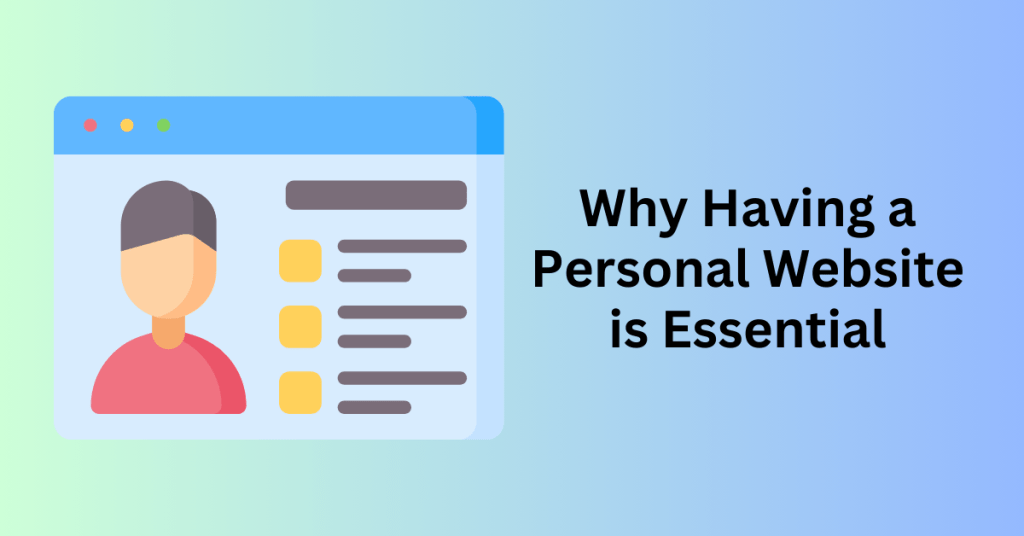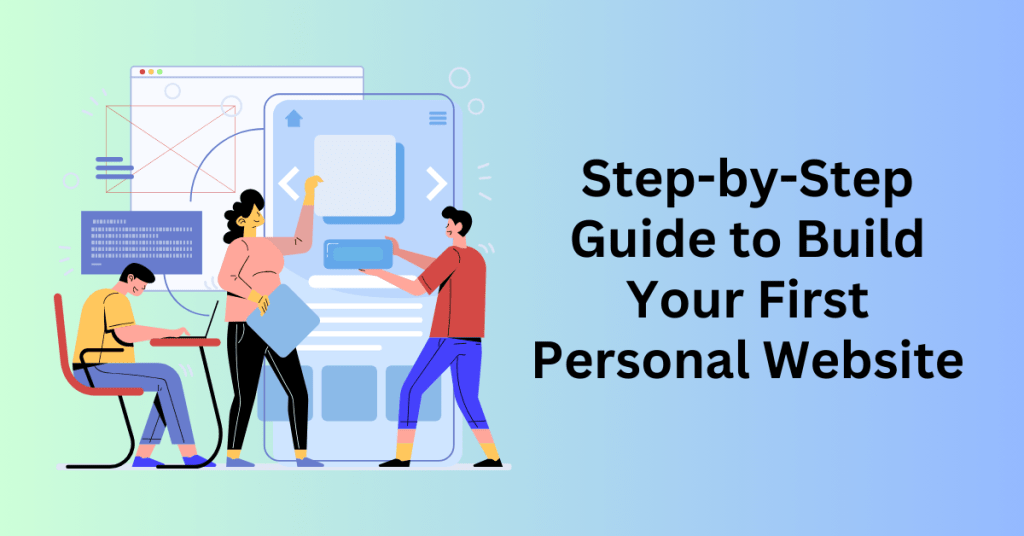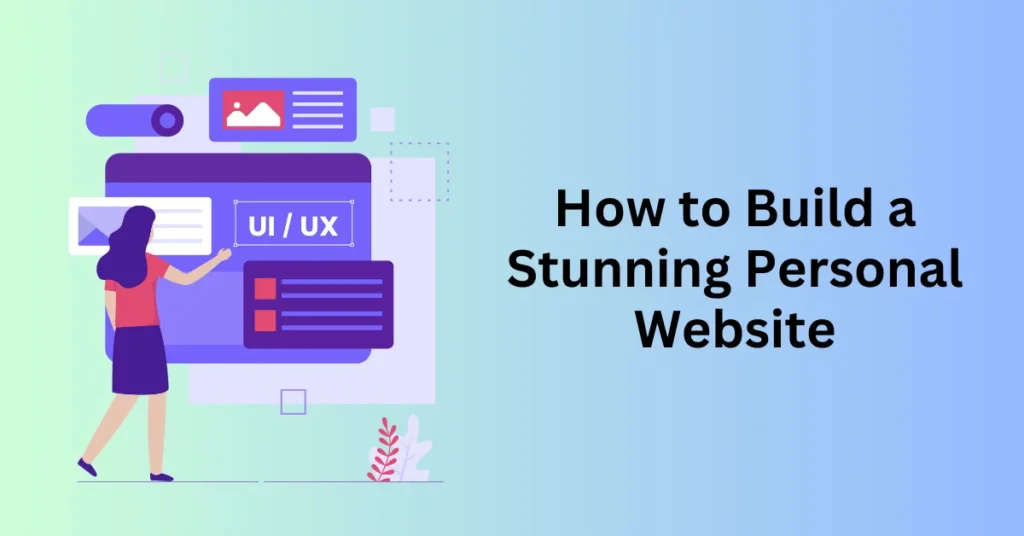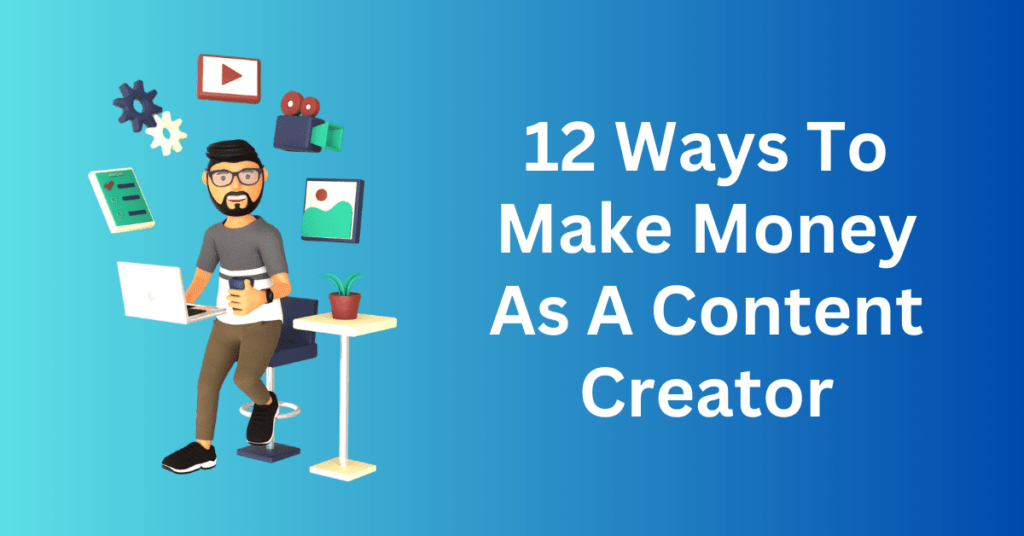In today’s digital world, your online presence is more than just a necessity—it’s an opportunity to make a statement. A personal website is not just another webpage; it’s your platform to showcase your skills, passions, and experiences on your own terms.
Why let social media profiles, job boards, or LinkedIn define your story? With a personal website, you control the narrative, shape your brand, and present yourself exactly how you want. Whether you’re looking to impress potential employers, attract clients, or simply share your creative journey, a well-designed personal website can make a lasting impact.
In this guide, we’ll explore:
- The importance of having a personal website
- A step-by-step guide to building your own
Ready to take control of your digital presence? Let’s dive in!
Start Your Personal Website Today
Why Having a Personal Website is Essential for Your Professional Growth
In today’s digital world, having a personal website is no longer just an option—it’s a necessity. Whether you’re a freelancer, entrepreneur, or job seeker, a personal website serves as your professional home base, allowing you to highlight your skills, showcase your portfolio, and control your online presence. Unlike a traditional resume or LinkedIn profile, a website offers a dynamic and interactive way to present yourself to potential clients, employers, and industry connections.

1. Establishing Your Professional Portfolio
Your personal website acts as a powerful digital portfolio, enabling you to present your work in a visually appealing and organized manner. Whether you’re a designer, photographer, writer, or consultant, your website provides a space to display your best projects, case studies, testimonials, and success stories. By strategically combining compelling visuals with concise descriptions, you can create an engaging experience that helps visitors quickly understand your expertise and accomplishments.
Additionally, having a dedicated portfolio section on your website improves your credibility. Instead of relying on third-party platforms, you maintain full control over how your work is presented, ensuring that it aligns with your brand and professional identity.
2. Expanding Your Online Presence and Visibility
Your personal website serves as the central hub of your online presence, seamlessly connecting all your digital platforms in one convenient location. While social media accounts, LinkedIn profiles, and online portfolios are undoubtedly valuable, they often come with limitations on customization and control. In contrast, a personal website gives you the freedom to curate content, optimize for search engines, and strategically drive targeted traffic directly to your personal brand.
Furthermore, by integrating links to your social media accounts, blog, or online store, your website ensures that visitors can effortlessly navigate your entire digital ecosystem. As a result, this not only strengthens your brand identity but also enhances your visibility in search engine results. Consequently, potential clients, employers, and collaborators will find it easier to discover and connect with you, ultimately expanding your professional opportunities.
3. Enhancing Your Personal Brand and Credibility
A well-designed personal website not only showcases your professionalism but also reflects your dedication to your craft. It provides a platform where you can share valuable insights, publish blog posts, and highlight your industry expertise—all of which help build trust with your audience. Additionally, incorporating testimonials, case studies, or media features enhances your credibility by offering social proof that reinforces your authority.
Unlike social media platforms, where algorithms dictate visibility, a personal website grants you complete control over your content and messaging. This means you can tailor the design, layout, and user experience to perfectly align with your personal brand. As a result, every visitor leaves with a strong and lasting impression of who you are and what you have to offer.
4. Improving Discoverability Through SEO
One of the biggest advantages of owning a personal website is the ability to optimize it for search engines. By strategically incorporating relevant keywords, consistently creating valuable content, and carefully implementing SEO best practices, you can significantly improve your chances of appearing in Google search results. As a result, when someone searches for your name, profession, or area of expertise, your website will have a much higher chance of ranking at the top. This, in turn, puts you ahead of competitors who rely solely on social media or third-party platforms, giving you greater control over your online presence and visibility.
Start Your Personal Website Today
Different Types of Personal Websites
A personal website is more than just a digital presence—it’s a powerful tool for showcasing your expertise, building a brand, and even generating income. Whether you’re a creative professional, writer, or entrepreneur, having a personal website tailored to your goals can help you stand out online.
From portfolios and blogs to eCommerce stores, personal websites come in many forms. Let’s explore three popular types and how they can help you establish a strong digital identity.
1. Personal Portfolio Website
A portfolio website serves as a digital gallery, making it an essential tool for graphic designers, photographers, artists, and web developers. This type of personal website is all about visual impact, allowing professionals to highlight their best work in an engaging, organized format.
Key Features of a Great Portfolio Website:
- Minimalist Design: A clean layout with a white or neutral background ensures that the focus remains on your work.
- Easy Navigation: Visitors should be able to browse projects effortlessly without distractions.
- High-Quality Visuals: Striking images, organized galleries, and videos can showcase your expertise effectively.
- Concise Project Descriptions: Brief but compelling explanations help potential clients or employers understand your creative process.
- Mobile-Friendly Experience: Since most users browse on their phones, optimizing for mobile is crucial.
A well-structured portfolio website not only makes your work stand out but also enhances your credibility in your industry.
2. Personal Blog Website
A blog is an excellent choice for writers, thought leaders, and content creators looking to share their expertise, stories, or industry insights. Whether you’re writing about travel, business, fitness, or lifestyle, a blog allows you to connect with an audience and establish authority in your niche.
Essential Elements of a Successful Blog Website:
- Compelling Content: Engaging, informative, and well-researched blog posts help attract and retain readers.
- Consistent Posting Schedule: Regular updates keep your audience engaged and improve SEO rankings.
- Rich Media Integration: Adding images, videos, and infographics enhances the reading experience.
- Clear Navigation & Categories: Organizing content into categories makes it easier for readers to find what they need.
- Social Sharing Buttons: Enabling easy sharing increases reach and engagement.
Blog websites can also be monetized through affiliate marketing, sponsored posts, and digital products, making them a great long-term investment.
3. Personal Website with Online Store
If you’re an entrepreneur, artist, or digital creator, combining a personal website with an online store is a powerful way to sell products or services. Whether you offer handmade crafts, digital downloads, or online courses, an eCommerce-integrated website allows you to build a brand while maintaining full control over your business.
Key Features of a High-Converting Online Store Website:
- Seamless User Experience: Simple navigation, fast-loading pages, and mobile responsiveness enhance the shopping experience.
- Secure Payment Gateway: Integrating trusted payment options like PayPal, Stripe, or credit cards builds customer trust.
- Clear Product Descriptions & High-Quality Images: Detailed descriptions and professional photos help customers make informed purchasing decisions.
- Optimized Checkout Process: A streamlined, one-page checkout reduces cart abandonment.
- Customer Reviews & Testimonials: Social proof encourages potential buyers to trust your brand.
By combining personal branding with eCommerce functionality, you can establish yourself as both an expert and a business owner.
Step-by-Step Guide to Build Your First Personal Website
Building a personal website now is easier than ever, thanks to user-friendly website builders like Bluehost. Whether you’re creating a portfolio, a blog, or an online store, you don’t need advanced web design skills to get started. With the right tools, you can launch a professional, visually appealing website that represents your brand effectively.

This guide will walk you through each step of building your website using Bluehost, from planning and design to optimization and launch.
Step 1: Plan Your Personal Website Layout and Content
Before diving into website creation, take time to strategize. Your site’s structure and content should be well-organized to provide a seamless experience for visitors.
Key Aspects to Consider:
- Define Your Goals: Are you building a portfolio to showcase your work? A blog to share insights? An eCommerce store? Clearly outline your website’s purpose.
- Plan Your Pages: Essential pages include:
- Homepage: Your website’s introduction and key highlights.
- About Me: A section where visitors can learn more about you and your expertise.
- Portfolio/Work Samples: If applicable, showcase projects, testimonials, and case studies.
- Blog: If content creation is your focus, this section will help attract organic traffic.
- Contact Page: Make it easy for visitors to reach you with a contact form or links to your social profiles.
- Think About User Experience (UX): A well-structured site ensures easy navigation, a clean layout, and a compelling call-to-action (CTA).
- Plan for Scalability: As your brand grows, you may need to add new pages or update existing ones.
Pro Tip: Create a wireframe or sketch of your website layout before you start building—it will help streamline the process and ensure a user-friendly design.
Step 2: Design Your Personal Website for a Strong First Impression
Now that your content plan is ready, it’s time to focus on the website’s visual appeal. Your design should reflect your personal brand while ensuring a smooth browsing experience.
Key Elements of a Great Website Design:
- Colour Scheme: Choose colours that align with your brand and create a visually cohesive look.
- Typography: Pick easy-to-read fonts for better readability across all devices.
- High-Quality Visuals: Use professional images, graphics, and icons that complement your content.
- Consistent Branding: Maintain uniform styles across all pages to reinforce your brand identity.
- Mobile Responsiveness: Ensure your website looks and functions well on smartphones and tablets.
Bluehost makes it simple to create a stylish website without technical skills. Their AI-driven WonderSuite tool provides pre-designed templates with customizable fonts, colours, and layouts, making it easy to achieve a polished look.
Step 3: Build Your Website Using Elementor
Creating a website no longer requires technical skills or coding expertise. Thanks to AI-powered tools, anyone can launch a fully functional website in just minutes.
With Elementor, even beginners can design a stunning, user-friendly site without writing a single line of code. Whether you’re building a personal blog, an online portfolio, or a full-scale eCommerce store, Elementor website builder streamlines the process. From drag-and-drop customization to AI-assisted design suggestions, these tools make website creation effortless.
Take advantage of AI-powered website builders today and bring your vision to life without the hassle of complex coding.
Step 4: Test and Launch Your Website
Before making your site live, perform thorough testing to ensure a seamless user experience.
Key Testing Checklist:
- Cross-Device Compatibility: Check how your website appears on desktops, tablets, and mobile devices.
- Browser Compatibility: Ensure your site functions well on Chrome, Firefox, Safari, and Edge.
- Page Speed Optimization: Test loading times—slow pages can drive visitors away.
- Broken Links & Navigation Issues: Ensure all links work and lead to the correct pages.
- Call-to-Actions (CTAs): Verify that your buttons and forms encourage user engagement.
Once your website passes all tests, it’s time to launch!
Promoting Your Website After Launch:
- Share it on social media and relevant online communities.
- Send an email announcement to your network.
- Join forums and groups related to your niche and include your website in your profile.
Launching your website is just the beginning—continue refining and updating it to enhance user engagement and SEO performance.
Step 5: Optimize for SEO to Drive Traffic
A beautifully designed website won’t attract visitors unless it’s optimized for search engines. SEO (Search Engine Optimization) ensures your site ranks higher on Google and reaches a broader audience.
How to Optimize Your Website for SEO:
- Keyword Research: Identify the terms your target audience searches for and naturally integrate them into your content.
- Use Yoast SEO Plugin: This WordPress tool helps with:
- Optimizing Meta Titles & Descriptions for better search visibility.
- Improving Readability to ensure engaging, user-friendly content.
- Generating XML Sitemaps to help search engines index your pages faster.
- Optimize Images: Compress large images to improve site speed and add alt text for better rankings.
- Internal & External Links: Link to relevant pages on your website and reputable sources to boost credibility.
- Update Content Regularly: Search engines favour fresh content, so keep your website active with new blog posts or updates.
Bonus Tip: Monitor Performance
Yoast SEO also offers built-in analytics to track keyword rankings and optimize your content accordingly. By staying on top of SEO trends, your website will continue to grow in visibility.
Start Your Personal Website Today
Key Elements for Successful Personal Website
A personal website is more than just a digital business card—it’s a powerful platform to showcase your skills, tell your story, and connect with your audience. A well-designed website blends aesthetics, functionality, and strategic content to create an engaging experience for visitors. But what exactly makes a personal website stand out?
Here, we’ll explore five essential elements that define a great personal website and ensure it performs well in terms of user experience, branding, and search engine visibility.
1. Define Your Purpose and Goals
Before designing your website, start with a clear purpose. Ask yourself:
- What do I want to achieve with my website?
- Who is my target audience?
- What actions do I want visitors to take?
Whether you’re building a portfolio, a personal blog, or a professional brand, defining your goals helps shape your content, design, and marketing strategy. A strong mission statement builds trust and encourages visitors to engage with your website, whether by exploring your work, subscribing to updates, or reaching out for collaboration.
2. Create a Strong Visual Identity
First impressions matter, and your website’s visual design plays a crucial role in shaping how visitors perceive you. From the moment they land on your site, a cohesive and professional design immediately enhances credibility. As a result, users are more likely to stay, explore your content, and engage with your brand.
One key aspect of great visual design is maintaining a consistent color scheme. By choosing colors that align with your brand and evoke the right emotions, you create a recognizable and inviting online presence. In addition to color, high-quality images and graphics significantly impact how your site is perceived. Investing in professional photos, custom graphics, or even a personal logo not only adds authenticity but also gives your site a polished, high-quality look.
Beyond colour and imagery, typography and readability are equally important. Selecting clean, legible fonts ensures that users can easily read your content across all devices, which, in turn, improves their overall experience. Ultimately, a visually appealing website is more than just aesthetically pleasing—it enhances usability, strengthens your brand presence, and contributes to long-term success.
3. Publish High-Quality Content
Content is the foundation of your personal website, and it should be valuable, engaging, and optimized for search engines. When crafted effectively, strong content not only keeps visitors interested but also encourages them to return, ultimately helping to establish your credibility online.
To achieve this, one of the best practices for website content is writing compelling copy. By using clear and engaging language, you can highlight your expertise and personality, making your website more relatable and impactful. In addition, organizing content effectively is just as important—utilizing headings, subheadings, and bullet points enhances readability and ensures that visitors can navigate your site with ease.
Another essential element of a personal website is a well-crafted “About Me” page. This section provides the perfect opportunity to share your story, background, and what makes you unique, helping to build a personal connection with your audience. Furthermore, incorporating project showcases or case studies is an excellent way to demonstrate your work. By including detailed explanations and visuals, you can provide tangible proof of your skills and accomplishments, reinforcing your authority in your field.
Finally, proofreading your content is crucial for maintaining professionalism and credibility. Since poor grammar or unclear messaging can quickly turn visitors away, it’s essential to review your content carefully before publishing. By prioritizing quality and clarity, you can create a compelling website that not only engages visitors but also leaves a lasting impression.
4. Ensure Mobile Responsiveness
With more people browsing the web on smartphones and tablets, a mobile-friendly design is no longer optional—it’s essential. Ensuring that your website functions smoothly on all devices improves user experience, keeps visitors engaged, and enhances your site’s overall performance.
One of the most effective ways to achieve this is by using a responsive design. A responsive website adapts seamlessly to different screen sizes, providing a consistent experience across desktops, tablets, and mobile devices. Optimizing images and videos is also crucial—compressing media files helps improve load times, preventing slow performance that could drive visitors away.
Another key aspect of mobile optimization is testing navigation on mobile devices. Menus, buttons, and links should be easy to tap and navigate, ensuring that users can find what they need without frustration.
A responsive website not only enhances usability but also reduces bounce rates and improves SEO rankings. Google prioritizes mobile-friendly websites in search results, meaning that optimizing for mobile can lead to increased organic traffic and better visibility online.
5. Optimize for Search Engines (SEO)
A beautifully designed website won’t be effective if no one can find it. Search engine optimization (SEO) plays a crucial role in improving your website’s visibility in search engine results, helping to drive organic traffic and attract more visitors.
One of the most important SEO strategies is keyword research. Identifying the terms your target audience searches for and naturally integrating them into your content can boost your site’s relevance and ranking. On-page optimization is also essential—strategically placing keywords in titles, meta descriptions, headings, and URLs enhances search engine visibility.
Another key factor in SEO success is fast page loading speed. Optimizing images, enabling caching, and minimizing unnecessary code can significantly improve your site’s performance and user experience. Internal linking is equally valuable, as connecting relevant pages within your website helps improve navigation and increases SEO value.
SEO is an ongoing process, requiring regular content updates and performance monitoring to stay competitive in search rankings. By continuously refining your SEO strategy, you can ensure that your website remains visible, relevant, and well-positioned for long-term success.
Final Thoughts: How to Build a Stunning Personal Website: Beginner-Friendly Guide
Creating your own website is more than just establishing an online presence—it’s about sharing your story, passions, and talents with the world. Whether you’re showcasing creative work, writing about your experiences, or launching an online business, your website serves as your digital home. More importantly, it gives you full control over your narrative, allowing you to build your brand and connect meaningfully with others.
Thanks to cutting-edge website-building tools like Elementor, designing a stunning, professional site has never been easier. Once your site is live, optimizing it for search engines is crucial to reaching your target audience. Fortunately, Yoast SEO streamlines this process, enabling you to fine-tune your content and rank higher in search results—ensuring your website gets the visibility it deserves.
From website building and hosting to SEO optimization, Bluehost provides everything you need to establish and grow your online presence. Whether you’re launching your first website or refining an existing one, now is the perfect time to take action. Your story matters—let Bluehost help you share it with the world.


